Complete Barbell Single Leg Split Squat Exercise Guide
Learn everything about Barbell Single Leg Split Squat exercise including proper form, muscles worked, benefits, variations, alternatives, and common mistakes to avoid.
Muscles Worked & Equipment
Primary Muscles
Secondary Muscles
Equipment Needed
Muscle Categories
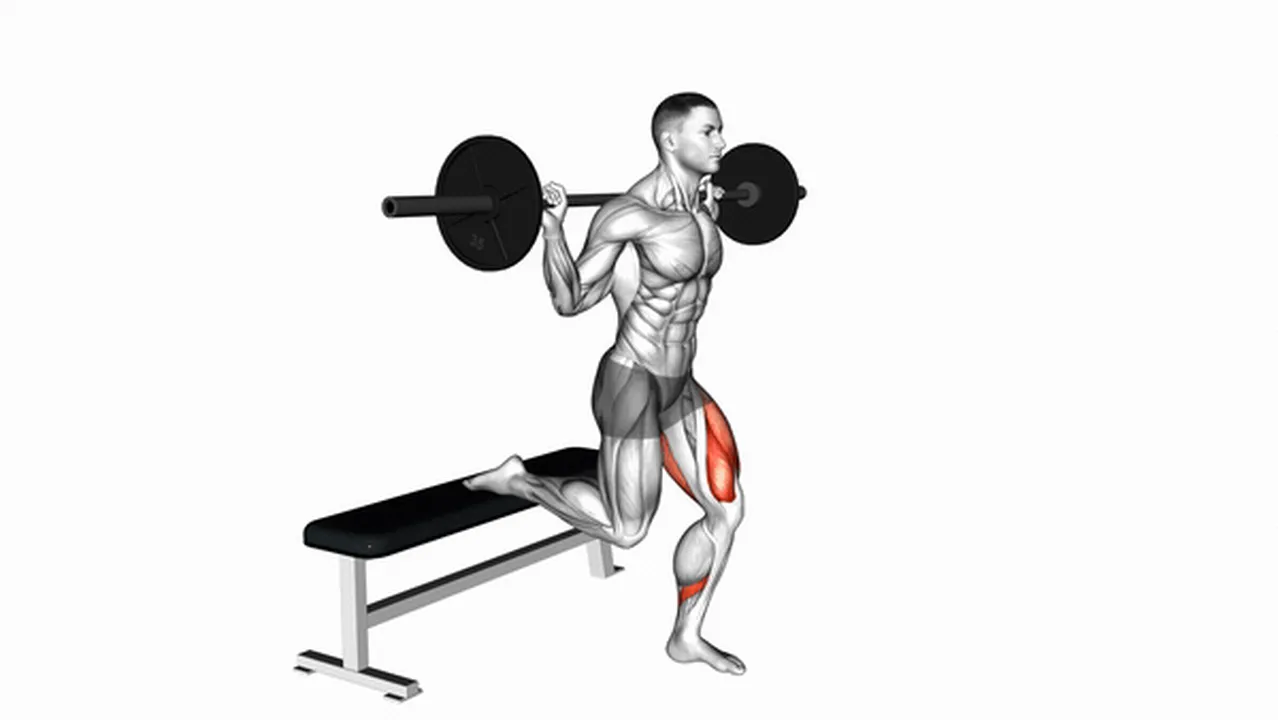
Introduction
1.
It works many muscles at once: your quads (front of thighs), hamstrings (back of thighs), glutes (buttocks), and core (middle body). This helps you get stronger overall.
2.
Because you stand on one leg, it improves your balance and stability. This is helpful for everyday activities and sports.
3.
It's good for athletes who need better stability and power in their legs.
4.
It's also useful for physical therapy or recovery from injuries, helping to strengthen leg muscles safely.
5.
This exercise makes your workouts more effective and helps you see better results faster.
6.
To do it, you stand with one leg forward and one back, holding a barbell across your upper back. You then lower your body by bending your front knee.
7.
It's important to keep your back straight and your front knee behind your toes to avoid injury.
8.
Start with a light weight and focus on good form before adding more weight.
9.
If you're new to this exercise, ask a trainer to show you the correct way to do it.
 Zylo AI
Zylo AI
Free Calorie
Counter
App
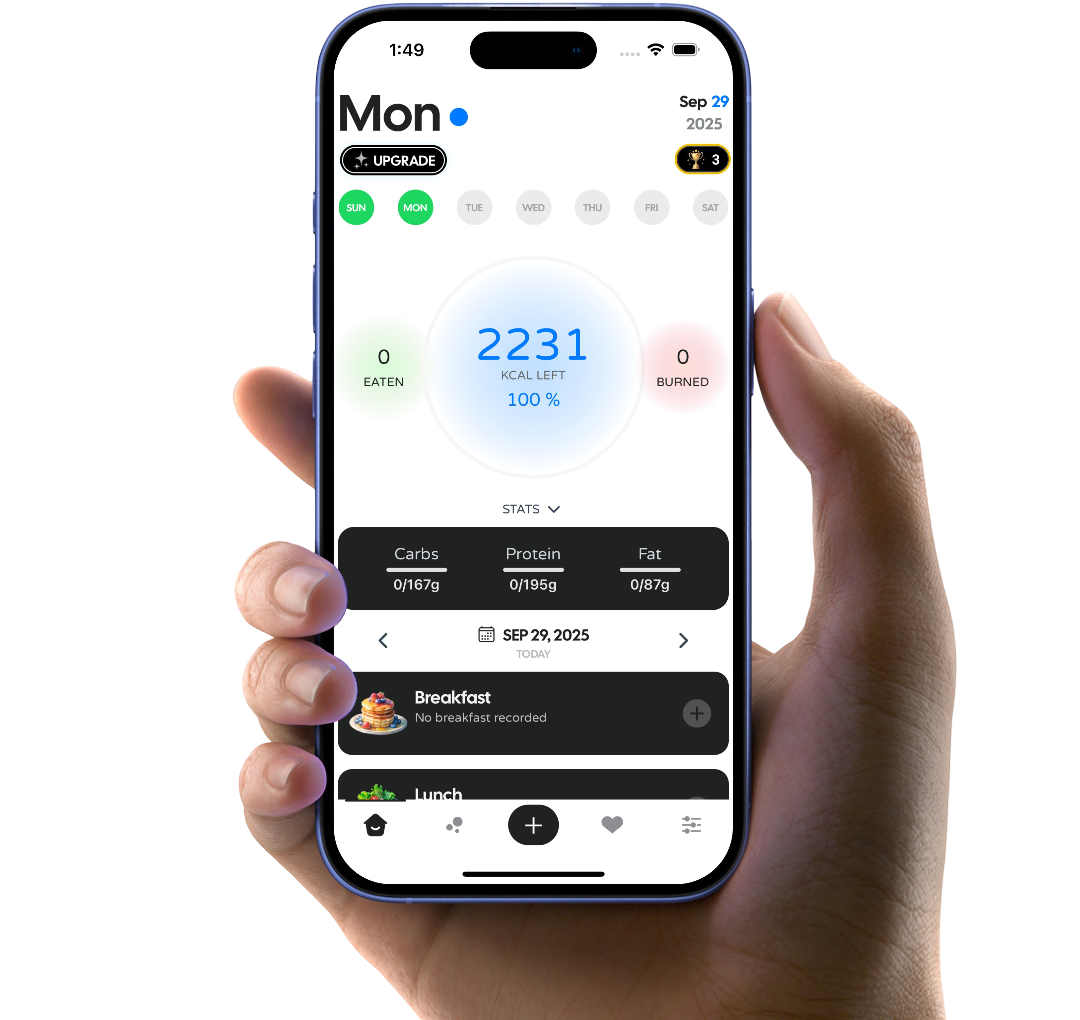




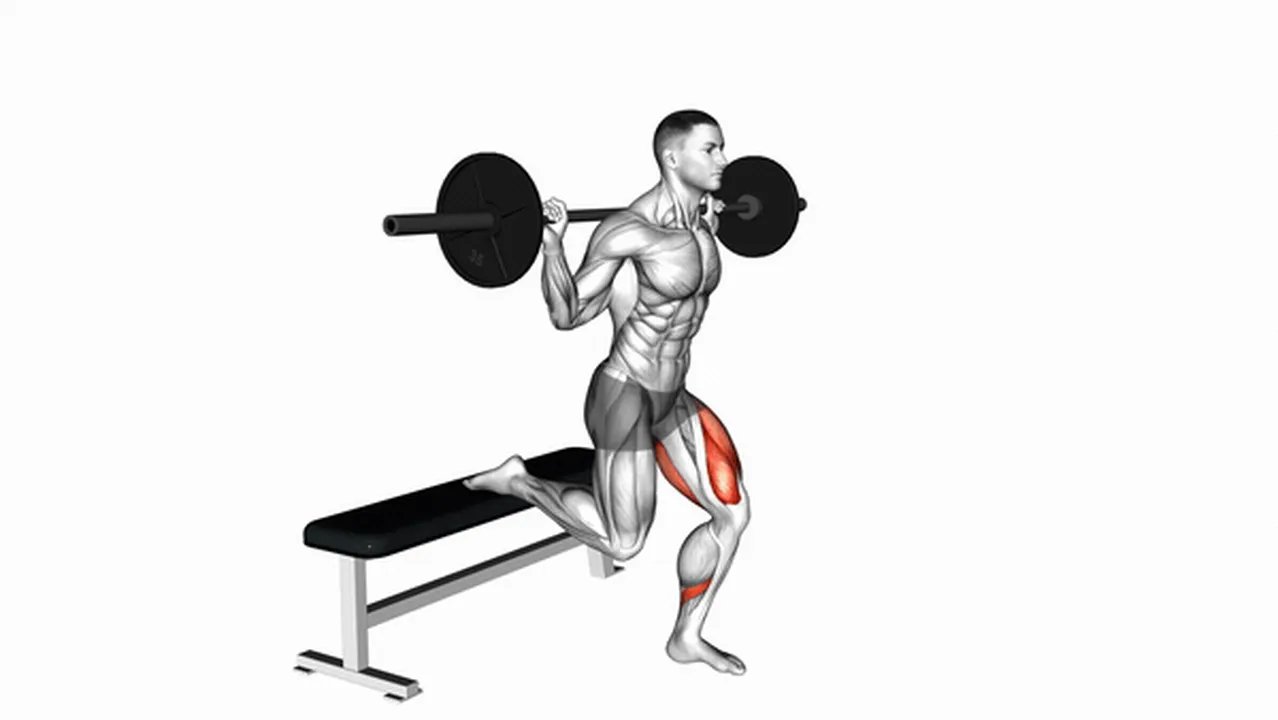
What are the Benefits of Barbell Single Leg Split Squats?
1.
It makes your leg muscles stronger: This exercise works your quads (front of thighs), hamstrings (back of thighs), and glutes (buttocks). Doing this regularly makes these muscles stronger and able to work for longer periods.
2.
It helps you balance better: Because you're standing on one leg, you have to use your core muscles (your stomach and back muscles) to keep your balance. This improves your coordination and overall stability.
3.
It makes you stronger for everyday life: This exercise is a compound movement, meaning it uses many muscles at once. This helps you do everyday activities like climbing stairs or carrying groceries more easily.
4.
It prevents muscle imbalances: Working each leg separately helps to make sure both legs are equally strong. This prevents injuries caused by one leg being much weaker than the other.
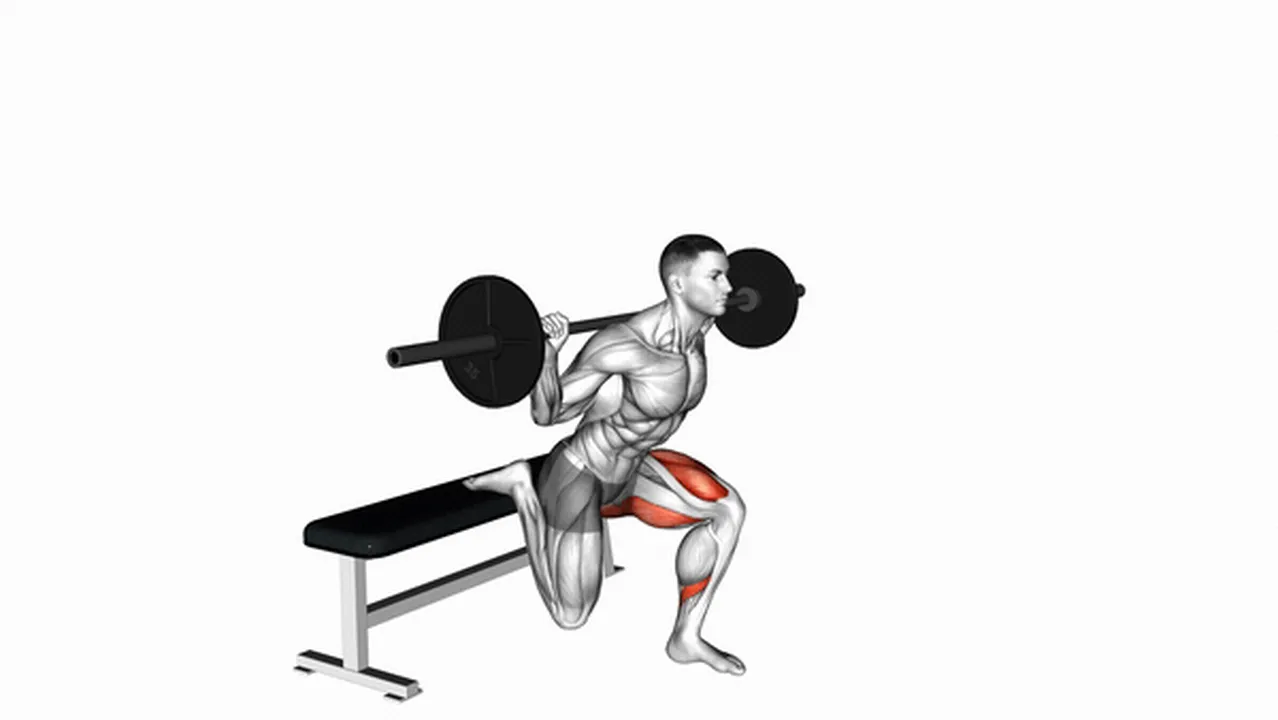
How to do Barbell Single Leg Split Squats?
1.
Find Your Stance: Stand with your feet about as far apart as your shoulders. Then, take a big step back with one foot, so you're standing with one foot in front of the other. This is your starting position. Keep your balance on your front foot.
2.
Go Down Slowly: Bend your front knee and lower your body. Go down until your front thigh is even with the ground. Your back knee should be close to the ground, but don't let it touch.
3.
Keep Good Posture: Imagine a string pulling you up from the top of your head. Keep your chest up, your shoulders back, and your stomach muscles tight the whole time. This helps you stay balanced and strong.
4.
Come Back Up: Push off with the heel of your front foot to stand back up. Control your movement as you rise—don't just jump up.
5.
Switch Sides: Do the same number of squats on one leg, then switch to the other leg and repeat.
6.
Important Tip: Move slowly and carefully. This helps you use your muscles better and keeps you from getting hurt.
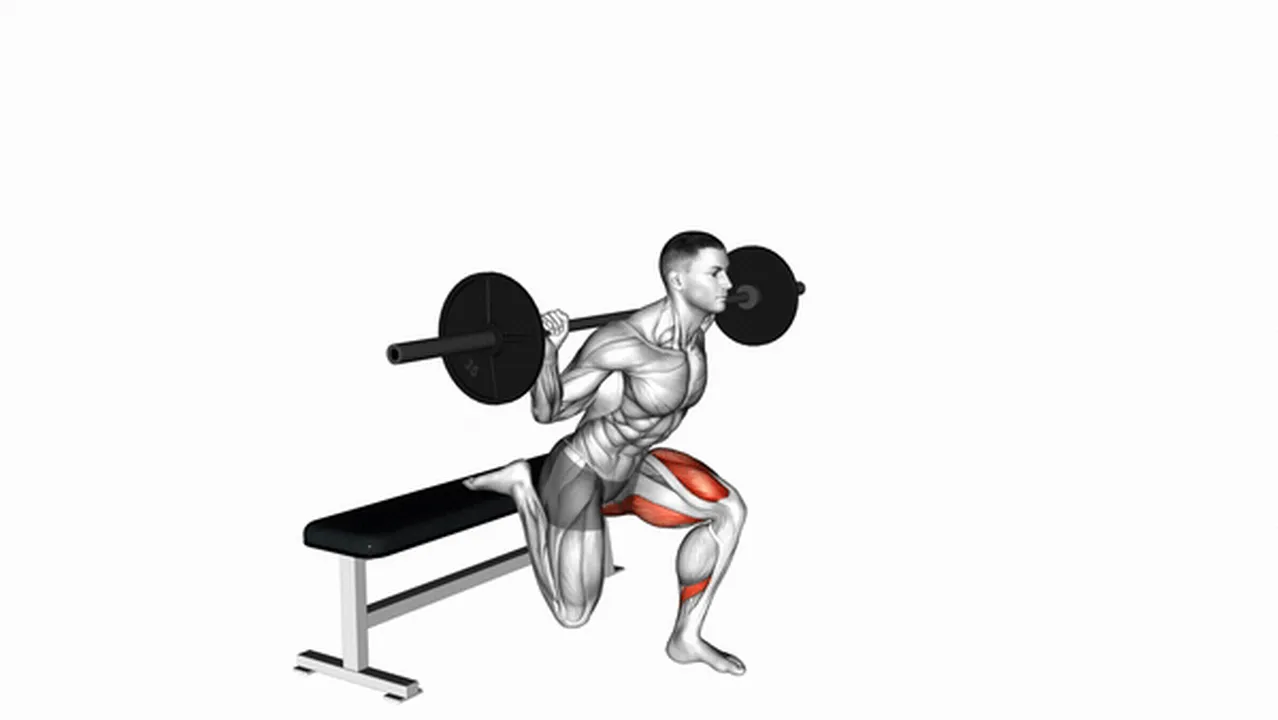
Common Barbell Single Leg Split Squat Variations
1.
Here are some other exercises you can try to work your legs in different ways:
2.
Barbell Side Split Squats: This exercise makes you move sideways. It works the inner and outer parts of your thighs and helps you become more flexible and balanced. It's good for building strength in a different way than regular squats.
3.
Barbell One Leg Squats: This is a tough exercise where you squat on one leg at a time. This helps build strength in each leg separately and improves your balance. It's really helpful if one leg is weaker than the other.
4.
Barbell Jefferson Squats: This squat lets you stand with your feet further apart. It works your thigh muscles (quadriceps) and buttock muscles (glutes) but is gentler on your lower back. It can help you learn to squat correctly and build stronger legs.
5.
Trying these different exercises can help you work different leg muscles and get fitter overall. See which ones you like best and fit your goals!
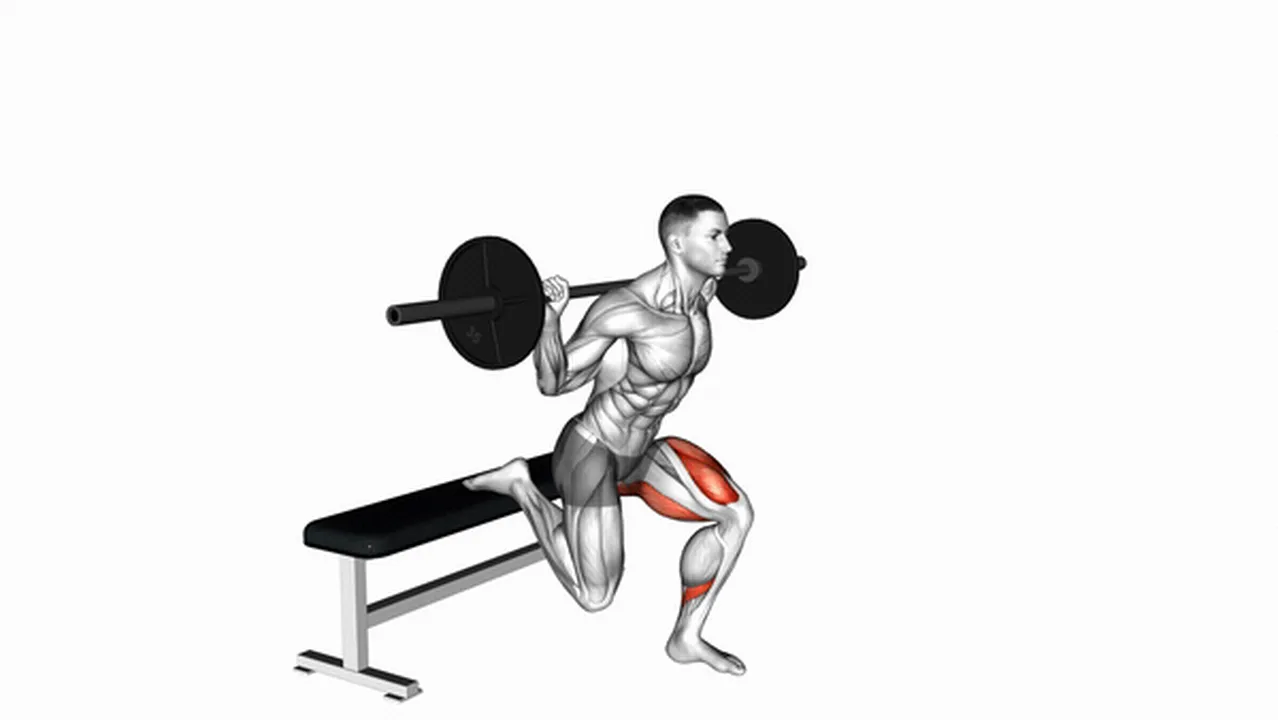
Alternatives to Barbell Single Leg Split Squats
1.
Barbell Lunges: These work your thighs (quads and hamstrings) and glutes, just like split squats. The stepping motion helps you get better at balancing.
2.
Barbell lunges are a good choice because they are easier to perform than split squats, and the stepping motion can improve balance and coordination. They also work the same muscles as split squats.
3.
Barbell Side Split Squats: This type targets the inner and outer parts of your thighs, plus your core muscles. Moving sideways improves your flexibility and balance.
4.
Side split squats are a good option if you want to work your inner and outer thighs. The lateral movement can improve flexibility and balance. They are also a good way to add variety to your leg workout.
5.
Barbell One-Leg Squats: This is a harder exercise that really tests your balance and strength. It's great for building strong legs and a strong core.
6.
One-leg squats are a more advanced exercise that challenges balance and strength, making it a great option for those looking for a more challenging workout. It is a good exercise for building overall leg strength and core stability.
7.
These exercises offer variety, help prevent muscle imbalances, and build stronger legs overall. Try them and see which you like best!
 Zylo AI
Zylo AI
Free Calorie
Counter
App





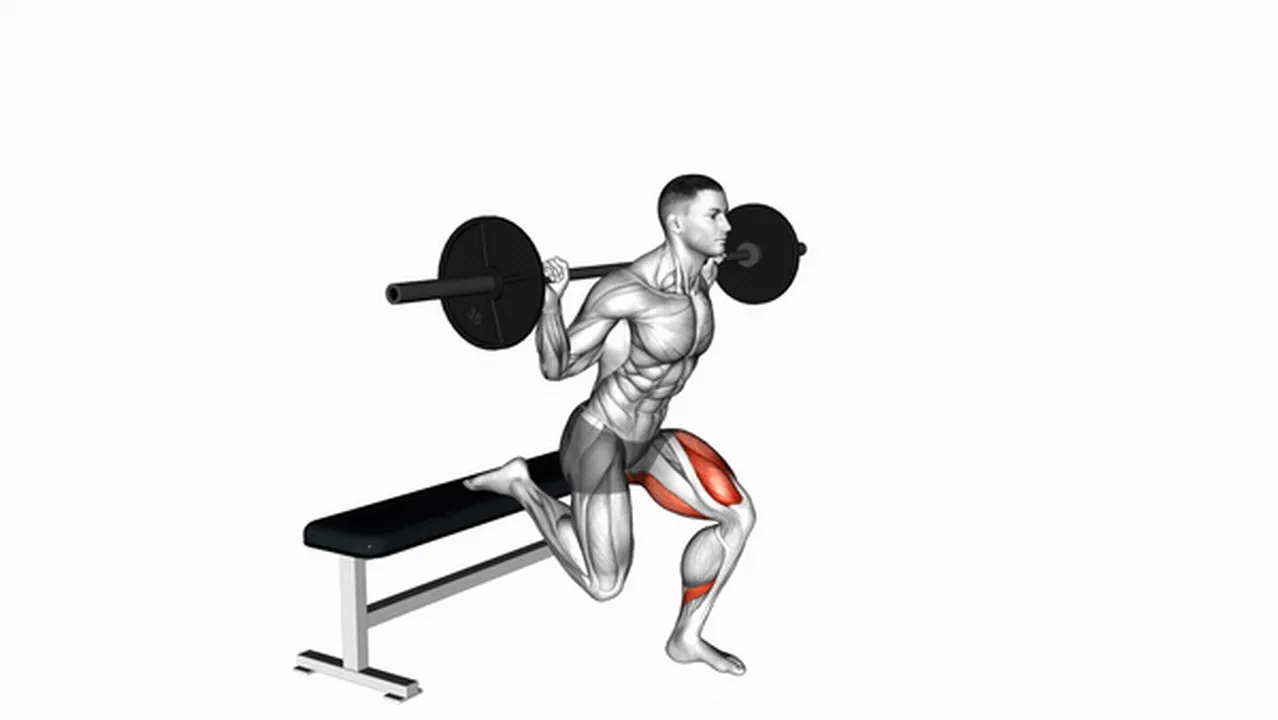
Common Mistakes During Barbell Single Leg Split Squats
1.
Stand up straight: Don't lean too far forward. Keep your chest up and your back straight. Leaning too much puts stress on your lower back.
2.
Go low enough: Try to get your front thigh parallel to the ground. This means your thigh should be level with the ground. Stopping higher than this makes the exercise less effective.
3.
Take your time: Don't rush! Slowly lower yourself down and slowly come back up. This helps you use the right muscles and keeps you in control, reducing the chance of injury.
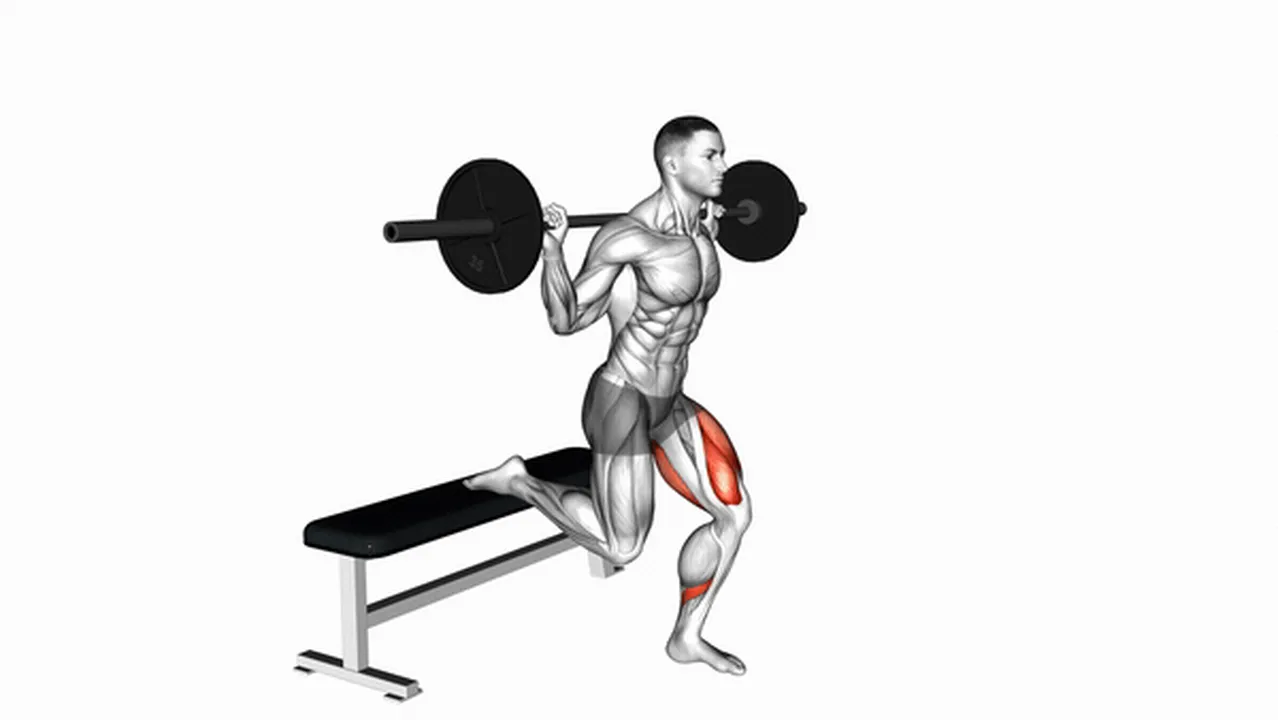
Takeaway
1.
This exercise is great for building strong legs and improving your balance. It works your quads, hamstrings, and glutes, making you stronger overall.
2.
Perfect Your Form for Best Results:
3.
Good form is key to avoid injury and get the most out of the exercise. Make sure your front knee stays behind your toes, your back knee points towards the floor, and your body is upright.
4.
Avoid Common Mistakes:
5.
Don't let your front knee collapse inward – this can strain your knee joint. Keep your core tight to maintain balance and stability throughout the movement.
6.
Gradually Increase the Challenge:
7.
To keep getting stronger, slowly make the exercise harder. You can add weight (dumbbells or a barbell), increase the number of repetitions, or do the exercise for a longer time.
8.
Explore Different Variations:
9.
There are many ways to do a single leg split squat. Try different variations to target different muscles or to make the exercise easier or harder. For example, you can do it with your back foot elevated.
10.
Start Today and See the Benefits:
11.
The single leg split squat is a very effective exercise. Add it to your workout routine and experience improved strength, balance, and athletic performance.
 Zylo AI
Zylo AI
Free Calorie
Counter
App





Disclaimer: The routines and schedules featured on our website are for informational purposes only and do not constitute medical or professional advice. Individual preferences, goals, and daily routines may vary significantly. Please note that some product links within our content are affiliate links. While not all routines have been explicitly endorsed by the individuals mentioned, we strive to ensure the accuracy and timeliness of the information we provide.
Disclaimer: Zylo AI(BR) does not provide medical advice, diagnosis, or treatment. Any information published on this website or by this brand is not intended as a replacement for medical advice. Always consult a qualified health or mental health professional with any questions or concerns about your mental health.
